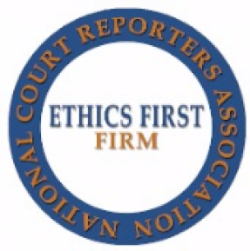Mesmerize the Jury: Important Elements of a Powerful Trial Discussion
Crucial aspects such as understanding the target market, crafting an engaging narrative, and understanding spoken and non-verbal communication are important elements of a reliable presentation. As these variables intertwine, they form a cohesive strategy that not only notifies yet likewise involves jurors on multiple degrees.

Recognizing Your Target Market
Understanding your target market is a critical aspect of efficient trial discussion. An effective discussion rests on the capability to comprehend the demographics, values, and predispositions of jurors. This comprehension notifies exactly how debates are framed, evidence exists, and psychological charms are crafted, ensuring that the message resonates with the jurors on a personal degree.
Research indicates that jurors come from varied histories and might have varying levels of recognizing relating to legal proceedings. In addition, comprehending the jurors' possible biases and life experiences enables the test speaker to expect arguments and address concerns proactively.
Efficient test presentation likewise includes observing jurors' responses during the proceedings. Involving with jurors as individuals rather than a cumulative device is essential in promoting a strong link in the court room.

Crafting a Compelling Story
Crafting a compelling narrative is important in assisting jurors via the intricacies of an instance. A well-structured story not just streamlines complex lawful concepts but likewise engages jurors on a psychological level, making the info extra relatable and remarkable.
To accomplish this, attorneys ought to start by identifying the core message they desire to share. This message needs to resonate with the jurors' values and experiences, fostering a link that goes beyond simple realities. The story needs to unravel practically, presenting events in a clear sequence to avoid confusion. This chronological method can assist jurors adhere to the progression of occasions, stressing reason and impact.
Integrating human aspects-- such as personal tales or narratives-- can even more improve the story's impact. These elements stimulate compassion, enabling jurors to picture the repercussions of the situation on the real worlds. Furthermore, using a regular style throughout the discussion strengthens the main argument, making it easier for jurors to keep critical points.
Eventually, an engaging narrative transforms a trial presentation from a simple recounting of truths into a persuasive story that mesmerizes the jury, encouraging them to deliberate with both reason and emotion.
Utilizing Visual Help
Integrating visual aids right into a test presentation can considerably enhance jurors' understanding and retention of details. Aesthetic materials such as charts, layouts, photos, and videos can transform intricate legal concepts and proof right into quickly digestible layouts. By involving multiple detects, these aids enable jurors to picture the situation's crucial elements, making it much easier for them to follow along and grasp detailed information.
Furthermore, well-designed aesthetic aids can stress crucial points and emphasize relationships in between different items of evidence. Timelines can efficiently highlight the sequence of events, while annotated pictures can clarify particular information appropriate to the instance. This not only help in understanding yet likewise enhances the narrative offered by the attorney.
Extremely complex or cluttered visuals may overwhelm jurors and take away from the message. Inevitably, efficient aesthetic interaction can be a powerful tool in persuading jurors and assisting them reach notified verdicts.
Mastering Verbal Communication
Reliable spoken communication is vital in a trial presentation, as it serves as the primary methods with which attorneys communicate their disagreements and connect with jurors. Simpleness in language promotes understanding and aids jurors understand intricate concerns offered during the trial.
Furthermore, tone and pacing significantly influence exactly how messages are gotten. A confident tone shares authority, while additional resources proper pacing enables jurors to absorb details without feeling overwhelmed. Lawyers ought to also differ their vocal inflections to stress crucial points and keep jurors' rate of interest throughout the presentation.
In addition, the organization of verbal disagreements is vital. Structuring the narrative realistically and coherently aids jurors comply with the attorney's line of thinking, making it simpler for them to retain important info. Making use of convincing methods, such as narration, can also improve the emotional resonance of the debates provided, therefore producing an extra profound link with jurors.
Ultimately, grasping spoken communication not just strengthens an attorney's case however additionally fosters depend on and rapport with the jury, significantly improving the opportunities of a beneficial judgment.

Engaging With Body Movement
Nonverbal communication plays a vital duty in trial presentations, often sharing messages that words alone can not express. Body movement, including gestures, stance, facial expressions, and eye contact, substantially influences exactly how jurors perceive the credibility over here and genuineness of the presenter. A certain stance, with shoulders back and an open posture, can instill depend on, while closed-off body language might suggest defensiveness or unpredictability.

Facial expressions need to show the emotions linked with the situation, reinforcing the story existing. For example, a genuine expression throughout a touching moment can generate empathy and reinforce the emotional allure. Inevitably, understanding body movement is crucial for efficient test presentations, as it improves spoken interaction and establishes a compelling visibility that reverberates with the jury.
Final Thought
To conclude, captivating the jury requires a strategic method that includes recognizing the audience, crafting a compelling look at this now narrative, using aesthetic help, mastering verbal communication, and engaging with body movement. Each component plays an essential role in creating a powerful trial presentation that resonates with jurors on both emotional and intellectual degrees (trial presentation). By integrating these elements successfully, lawyers can significantly enhance their ability to persuade and influence jury decision-making